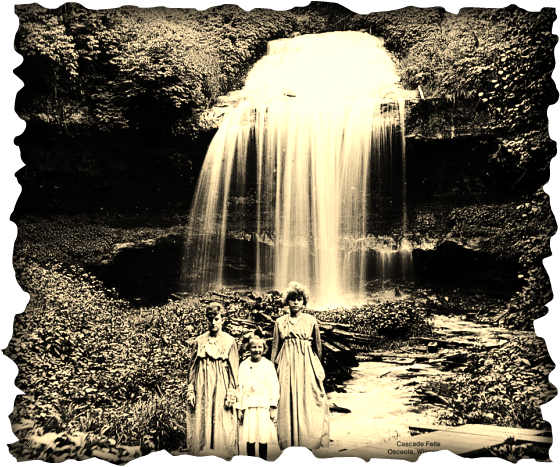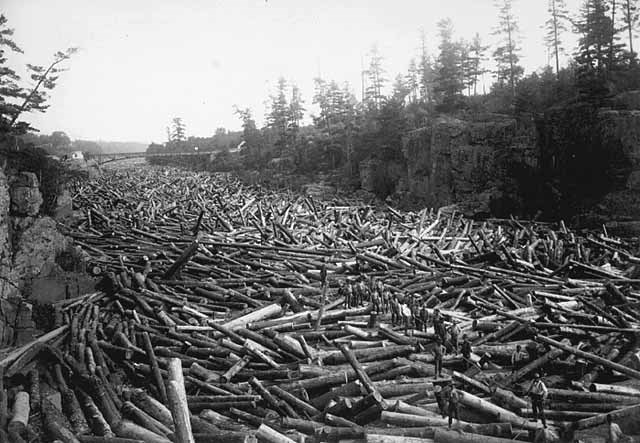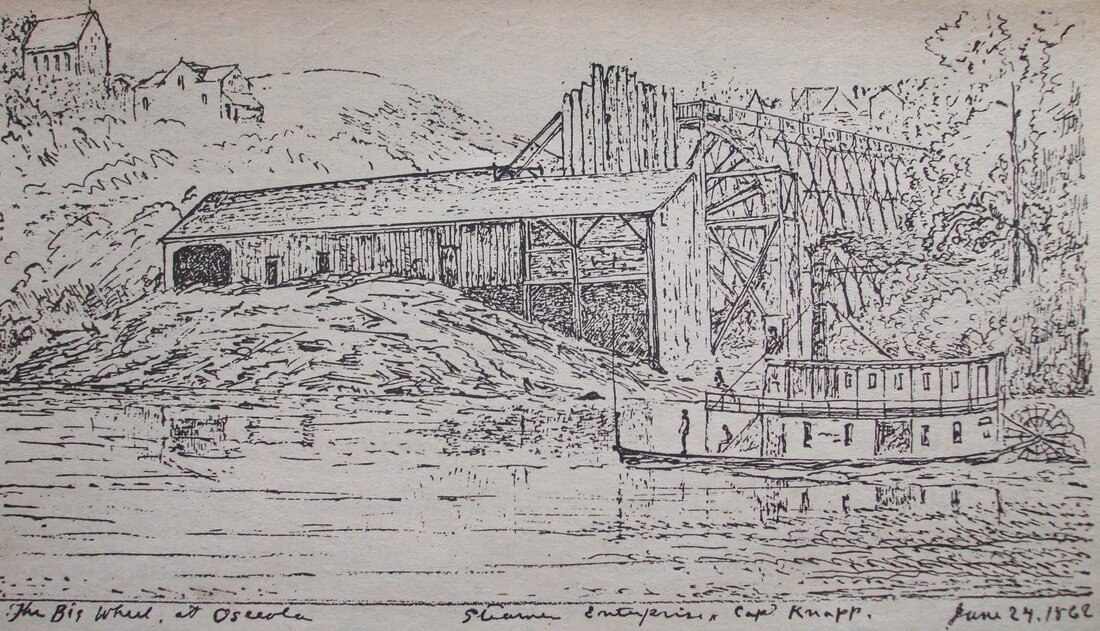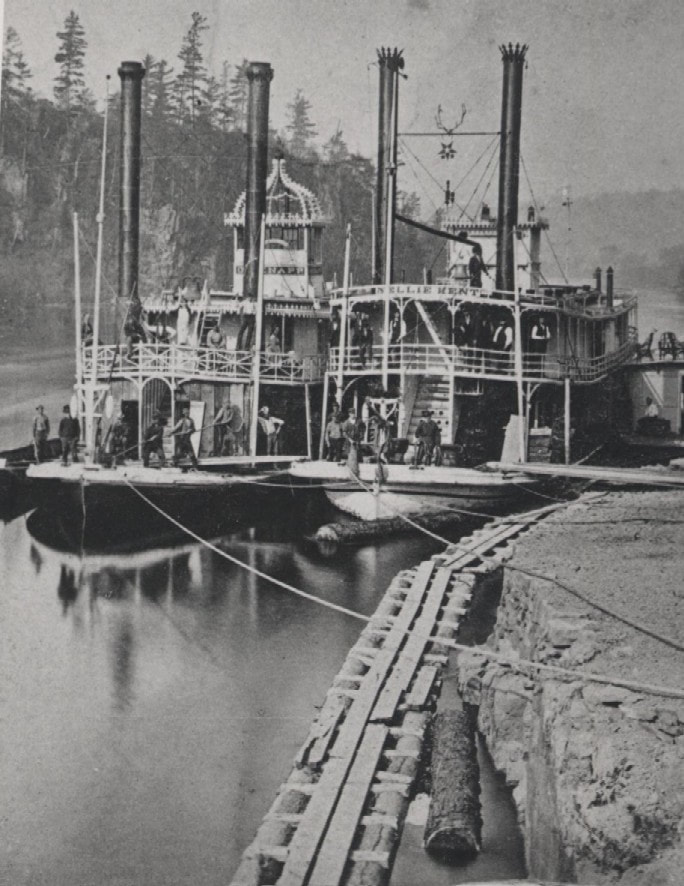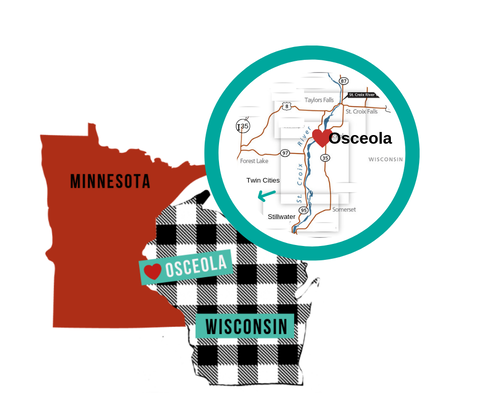Culture and Heritage
|
Osceola has long been the home of water-related industry. Flour, grist, and lumber mills were numerous in the late 1800s and early 1900s. The first steamboat on the St. Croix River was built at the Osceola Landing in 1854. The arrival of the railroad in 1887 heralded the end of the steamboat era. The town has been called several names throughout history, but we remain connected to our past. The foundation of our community is tied to the land, the St. Croix River and Cascade Falls. You see it as you walk down Main Street, a National Historic site. The Polk County’s first court house at Main and Second Street and the adjacent site of the original Staples Drug Store, both were built with bricks made from the Limestone bluffs along the River. when the Mounds Builders first arrived, when the Chippewa traveled the Blueberry Trail, when the first white trappers and lumbermen came up the St Croix in 1860... all are part of the fabric of Osceola. The first mill was built in 1845 and now those waters connect to the Mill Pond. Still - on any sunny summer day, the very same pond becomes alive with children throwing their first fish line just like young ones did so many years ago.
Beginning as a spring fed water source, the power of the Falls has been recognized throughout history . On May 14, 1844, when William Kent and his men first came upon the Cascade Falls, local historian, Grace Bloom describes: “…following a few rods from the waterfront up the creek that ripples through the glen, reached the point where the Cascade Falls burst upon their vision and they immediately recognized its potential power”. By 1845, the first mill was in operation in Osceola. Steamboats were built at its feet. And Osceola grew. As the years go by, the star of Osceola remains the same. You see the same rushing waterfall the Native Americans saw and the pioneers saw. Both walked the path from the Glen to the St. Croix. Our past connects us to our present day lives... the love of the St. Croix and of Cascade Falls weaves through generations of people. And today, we invite visitors to enjoy the Falls, walk the same path like so many have done before. |
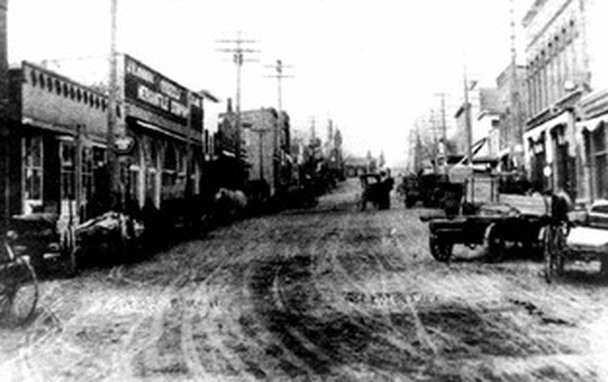
August 21, 1887 Polk County Press
THE SOO RAILROAD – Finished to Osceola Last Sunday August 21, 1887 –
A Bright Day for the Village – "Old Sol smiled on this village last Sunday, and gave one of his hot smiles too…Even the sick smiled, and those who did not smile must have been nearly dead…Old men and old women leaped for joy; young men and maidens gaily tripped the streets. Everybody was happy, and all who had smiles to shed prepared to let them shed with ease. We were all same, and there was no occasion for an inquiry into our mental condition. It was only an unusual feeling of joy that took possession of the mental makeup, and for a time held control….The brightness of matters all around was caused by the completion of the track of the Minneapolis, Sault Ste. Marie and Atlantic railroad to this village, and the appearance of the cars of the construction train, with a real live engine rattling down the track. The sight did everybody good. Thirty-five to forty years of waiting and watching for this glorious day, but not years of waiting and watching in vain. At last it is accomplished. We are in the world. Connected with business and commercial life. May the day prove as beneficial to the interest of the town as it is of joy and happiness to its people.”
And so it was. On September 3, 1879, the first two ladies rode a train through Osceola. By October, 1887, we had our first wooden depot, a warehouse, potato starch factory, and grain warehouse. This depot would succumb to a runaway locomotive. The Minneapolis, St. Paul, and Sault Ste. Marie Railway built the current red brick structure in 1915 & 16. The depot was named a National Register of Historical Sites following a full restoration by the Osceola Historical Society in 1994. Today the waiting rooms are once again filled with passengers riding period coaches on the Osceola & St. Croix Valley Railway.
THE SOO RAILROAD – Finished to Osceola Last Sunday August 21, 1887 –
A Bright Day for the Village – "Old Sol smiled on this village last Sunday, and gave one of his hot smiles too…Even the sick smiled, and those who did not smile must have been nearly dead…Old men and old women leaped for joy; young men and maidens gaily tripped the streets. Everybody was happy, and all who had smiles to shed prepared to let them shed with ease. We were all same, and there was no occasion for an inquiry into our mental condition. It was only an unusual feeling of joy that took possession of the mental makeup, and for a time held control….The brightness of matters all around was caused by the completion of the track of the Minneapolis, Sault Ste. Marie and Atlantic railroad to this village, and the appearance of the cars of the construction train, with a real live engine rattling down the track. The sight did everybody good. Thirty-five to forty years of waiting and watching for this glorious day, but not years of waiting and watching in vain. At last it is accomplished. We are in the world. Connected with business and commercial life. May the day prove as beneficial to the interest of the town as it is of joy and happiness to its people.”
And so it was. On September 3, 1879, the first two ladies rode a train through Osceola. By October, 1887, we had our first wooden depot, a warehouse, potato starch factory, and grain warehouse. This depot would succumb to a runaway locomotive. The Minneapolis, St. Paul, and Sault Ste. Marie Railway built the current red brick structure in 1915 & 16. The depot was named a National Register of Historical Sites following a full restoration by the Osceola Historical Society in 1994. Today the waiting rooms are once again filled with passengers riding period coaches on the Osceola & St. Croix Valley Railway.

